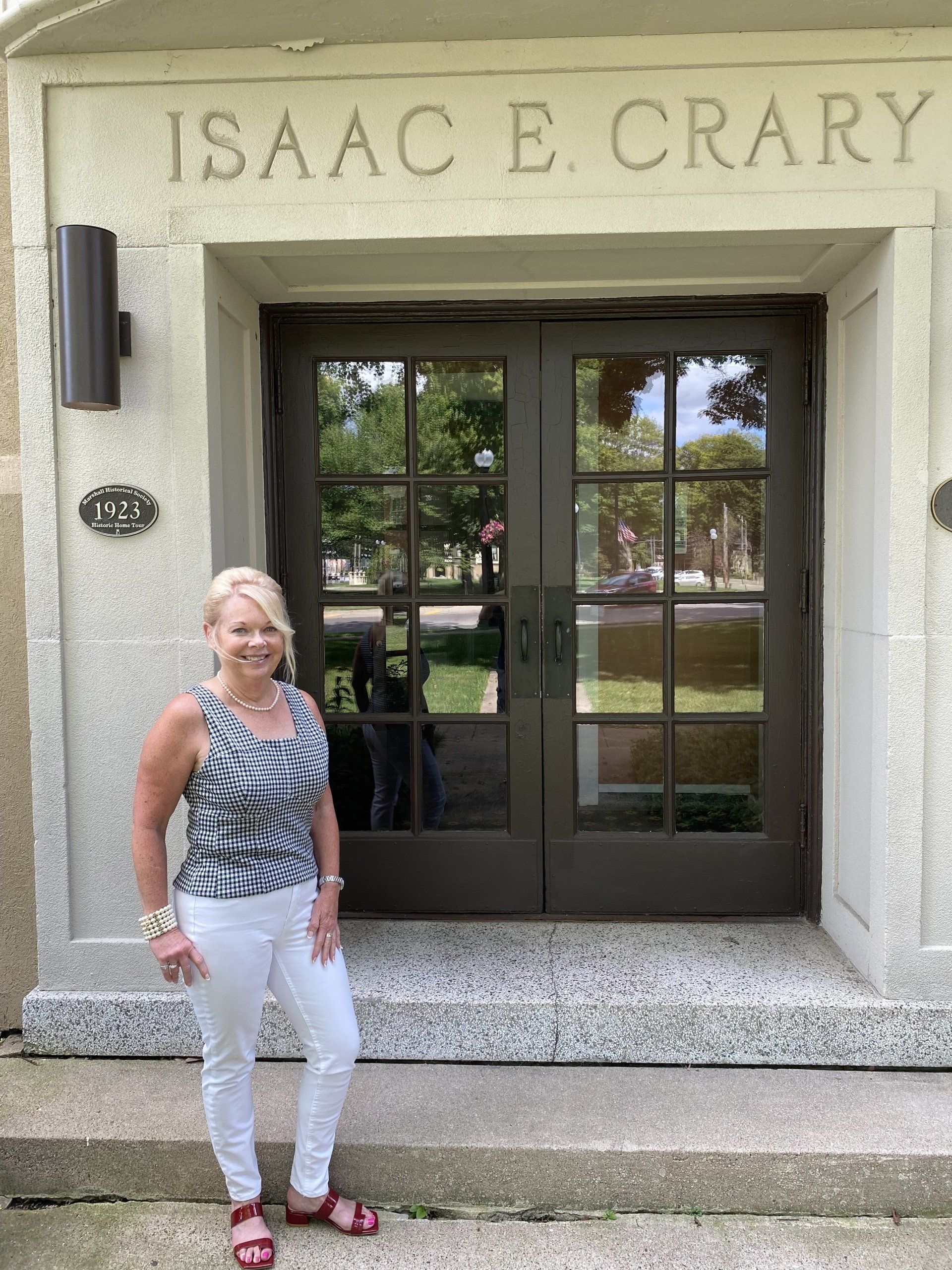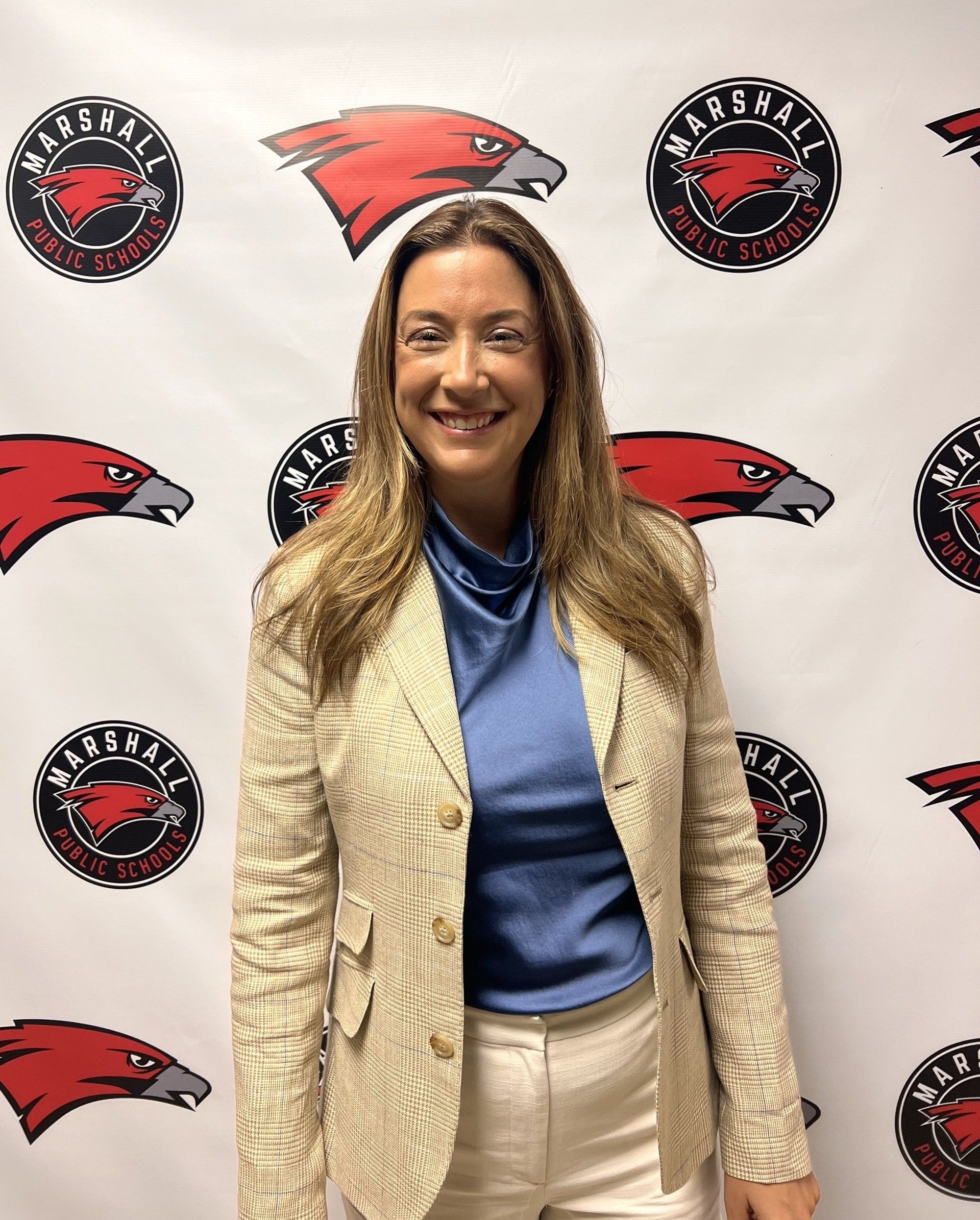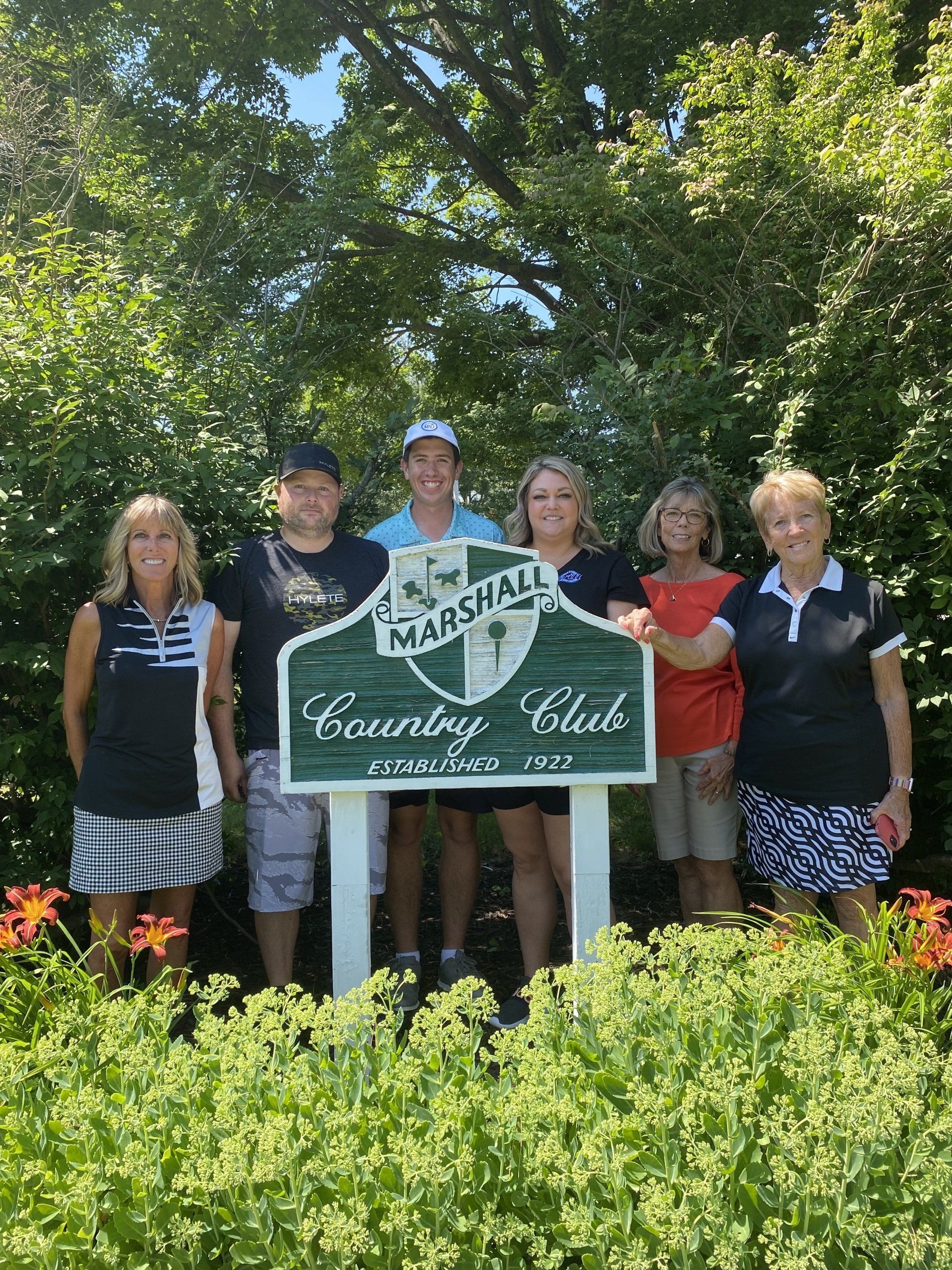Community gathers at Tee-Ball Garden in Albion for statue, plaque dedication
Jerry Sacharski was a recreation league director in Albion who pioneered T-ball as an organized youth sport in 1956 because he couldn’t stand to turn away young children with the desire to play baseball.
Sacharski passed away in February of 2009, but his memory has lived on, which was apparent on June 25 when well over 100 community members came together at Tee-Ball Garden in Albion, where a new T-ball statue and historic plaque was unveiled under the leadership of the Restore Our Coke Sign: Bring Art and History Downtown campaign team.
Many of Sacharski’s former players and their families were present to celebrate the event, along with members of the Sacharski family, including Jerry’s three sons—David, Michael and William.
Following the ceremony, current T-ball players played a short game in Victory Park near Hannah Street, which was followed by an “Old-Timers” game.
John Sims, one of Sacharski’s former players who spoke at the ceremony, expressed appreciation for his former coach and the impact he left on him and many others who played for him growing up.
“I go down to that field and I can see him (Sacharski),” Sims said. “I think everyone who played “pee-wee” ball with him remembers him. We have very few people in our lives as young people who make a mark like that. I’m 70 years old and I still remember that guy with very great kindness. He was good to us.”
Sims also cited a 1960 T-ball exhibition game, when Sacharski took him and other pee wee players to Michigan State University to put the sport on display in front of a TV audience as the game was videotaped by a local television station. In 2000, the video was accepted into the National Baseball Hall of Fame at Cooperstown, N.Y.
Sacharski was also a teacher with Albion Public Schools for nearly three decades. His son David said his father was great at teaching the fundamentals of the game and brought his teaching qualities to the baseball field.
“My dad wanted the kids to learn the fundamentals of baseball while playing T-ball, which was sometimes called pee wee ball,” said David. “Notice the word ‘fun’ in fundamentals. He wanted the kids to have fun and at the same time, learn basic skills. Being a teacher, he made T-ball a classroom activity on grass.”
William, another of the three Sacharski sons, said he was one of the original 60 T-ball players in Albion. He remembers the summer of 1956 when “everything changed” in terms of how the game of baseball was played when he was a young boy.
“The whole game that we played changed,” said William. “As a 7-year-old kid, we actually got to go up to bat and we actually got to hit the ball (instead of getting walked or striking out). You could take a stance and that ball was sitting there on the tee and you could just kind of drive through it. There were no free passes, there were no strikeouts. Every play, something happened. Just like Dave said, after a while, your fundamentals and your skills (improve) because you’re not standing around.”
Michael is the oldest of the Sacharski boys and said he was an umpire during the first T-ball game in June of 1956. He thanked everyone who showed up to the event and commended all who helped his father make the sport successful.
He told a story about his father after Jerry retired from school teaching when he was in Hawaii that embodied the type of person and coach Jerry was.
“I think the second spring he was there, he ambled up to the park that was near our home, because they were staying in our home,” Michael said. “And he ambled up in the park, and in Hawaii they have springtime youth baseball. He was sitting around on a picnic table watching how teams were practicing on the various fields and he did that a few times. Finally, one of the coaches of one of the teams—the players would have been T-ball players here, but they had (the pitcher) throw the ball, they don’t hit it off the tee—the coach said ‘I’ve seen you here, do you know anything about baseball? Would you like to help coach?’ And he said ‘yes, I will do that.’ The name of the team was the Padres, and they were already 0-3 and by the end of the season, they were I think about 12-3 and took the championship. He never told anybody who he was or where he came from. And to this day, the coaches, the players, the parents—have no idea who this guy was.”
Janet Domingo and Linda Kolmodin lead the Coca-Cola team and led the effort for the new plaque and statue at the Tee-Ball Garden.
The garden is a cooperative venture with the Calhoun County Land Bank and Albion Community Foundation. Money was raised for these art installations and additional landscape improvements through a matching Patronicity campaign through the Michigan Economic Development Corporation, according to a press release that ran in the ad-visor in the June 25 edition. Donated funds were held by an Albion Community Foundation. Other completed projects included the iconic Coca-Cola sign restoration and the new Malleable Mural celebrating Albion’s long foundry history.
“This is the completion of our three (main) projects,” said Domingo. “Many years ago, when I was working at the hospital, I made a video about Albion. I named it, ‘Small Town, Big Heart.’ Well, the town’s a bit smaller (now), but it hasn’t changed. As a result of a very successful campaign, we were able to continue with our goal to bring art and history downtown. We’re not quite done yet. We have a couple other small projects in the works. Thanks again to everyone and to everyone who supported us.”













